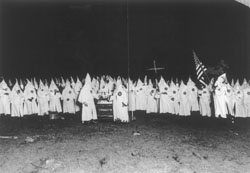| 1 |  | 
A. Purchase How much does it cost the city to buy school supplies, such as paper, cleaning fluids, pencils; police department supplies and equipment, such as patrol cars; street department materials, such as highway paint and signs?
Compare these costs with those in a city of comparable size in your state. Were there bids for your city's purchases, or were they negotiated? What is the state law on purchases that require competitive bidding? |
| 2 |  | 
B. Kids More than half a million abused and neglected children are under state supervision. This is twice as many as 10 years ago. The child welfare system, say experts, is in chaos: Children drift from foster homes to group homes and back as the courts and state agencies try to cope.
These drifting children often become homeless, unemployed, drug-using adults.
What's the situation in your community and state? Ask authorities on campus and in the community for their opinions. Interview those in the courts and law enforcement agencies for their experiences. |
| 3 |  | 
C. Klan During the 1920s, the Ku Klux Klan, which preached white supremacy and was violently anti-Catholic and anti-Semitic, had a following of several million. The Klan elected governors in Oklahoma and Oregon and "practically took over Indiana," writes the historian Samuel Eliot Morison.
Governors, state legislators and members of school boards adhered to the Klan philosophy. In Greybull, Wyo., the Klan-dominated school board told the school superintendent he had a choice: Divorce his wife or resign. The reason: His wife was Catholic.  <a onClick="window.open('/olcweb/cgi/pluginpop.cgi?it=jpg::::/sites/dl/free/0073511935/234798/men91957_1702.jpg','popWin', 'width=NaN,height=NaN,resizable,scrollbars');" href="#"><img valign="absmiddle" height="16" width="16" border="0" src="/olcweb/styles/shared/linkicons/image.gif"> (13.0K)</a> <a onClick="window.open('/olcweb/cgi/pluginpop.cgi?it=jpg::::/sites/dl/free/0073511935/234798/men91957_1702.jpg','popWin', 'width=NaN,height=NaN,resizable,scrollbars');" href="#"><img valign="absmiddle" height="16" width="16" border="0" src="/olcweb/styles/shared/linkicons/image.gif"> (13.0K)</a>
Denver Public Library, Western History Dept.
Colorado Klan Rally
In many communities, white-robed Klan members held rallies at which they burned crosses and paraded. The photograph above shows a portion of the 2,500 Klansmen who gathered in a canyon outside Boulder, Colo., in 1922. In the ceremony, the Boulder Klan was presented with a charter as 500 of the local members participated.
Colorado Klan members—reportedly 40,000 strong—elected a governor and five other state officials who had sought Klan support. At the University of Colorado in Boulder, the president, George Norlin, was told that the university would have its annual appropriation approved—if it cooperated with the Klan. Norlin said later: The Governor assured me that the University could have what it wanted in the way of appropriations provided the University would play the game with the Ku Klux Klan; that is, definitely provided the University would dismiss from its staff all Catholics and all Jews. I stated flatly to the Governor that if we had to pay such a price for the support of the Legislature, we preferred to do without that support. And we did without it. The State Senate cut the university appropriation in half, and the House removed it entirely.
Check local and state history for a feature about the existence of the Klan in your area. In some localities, the Klan still meets and burns crosses. |

